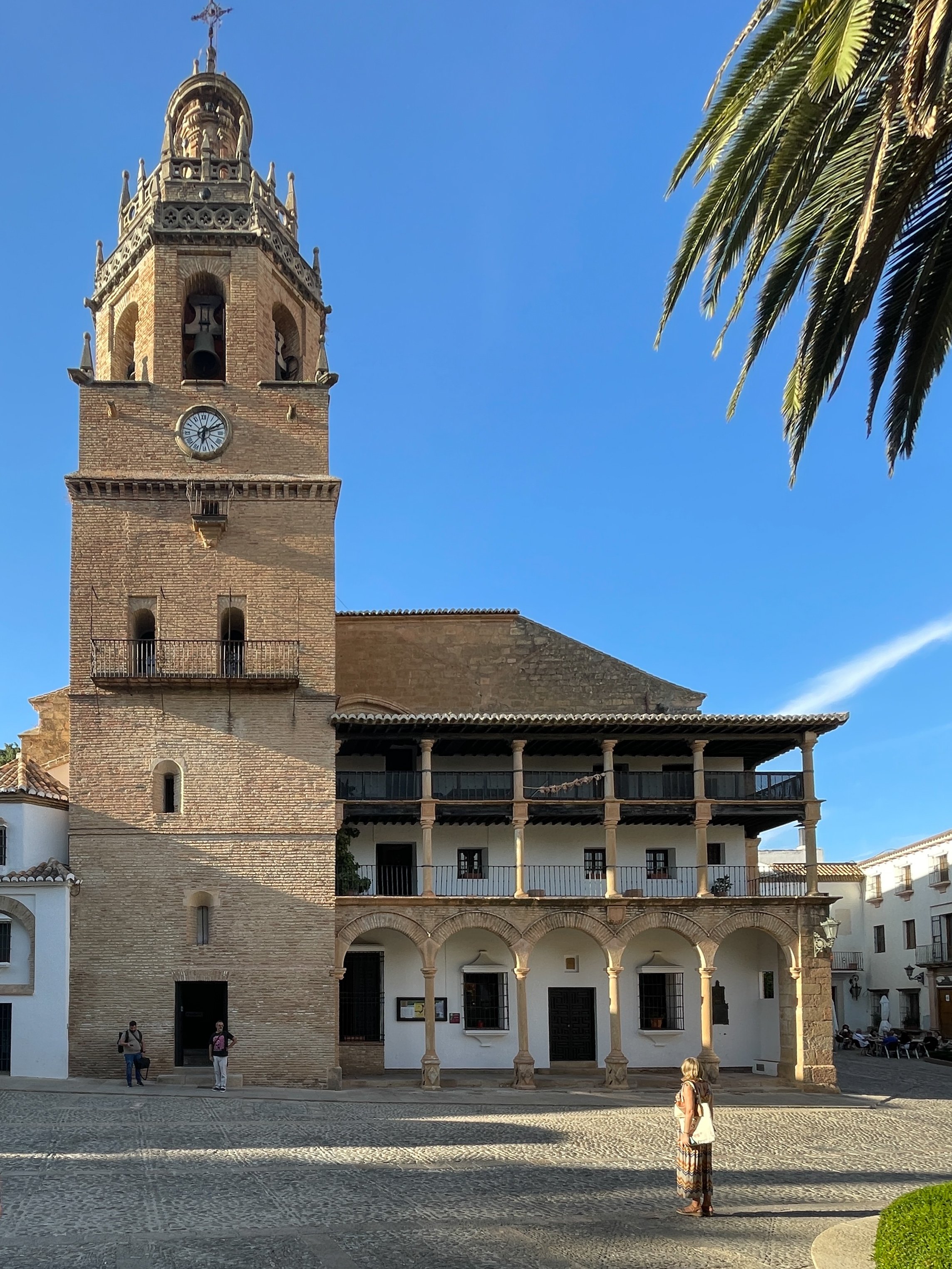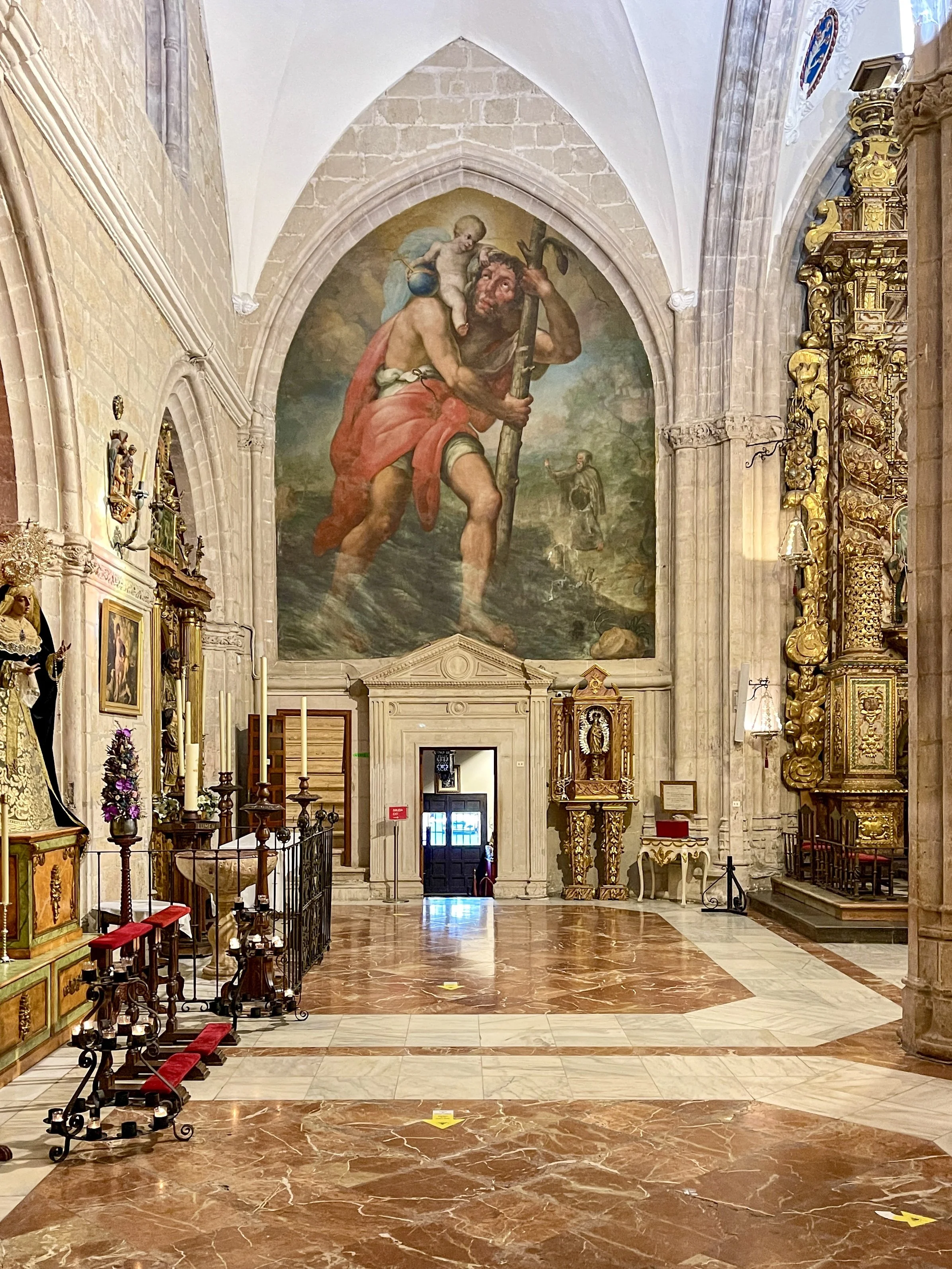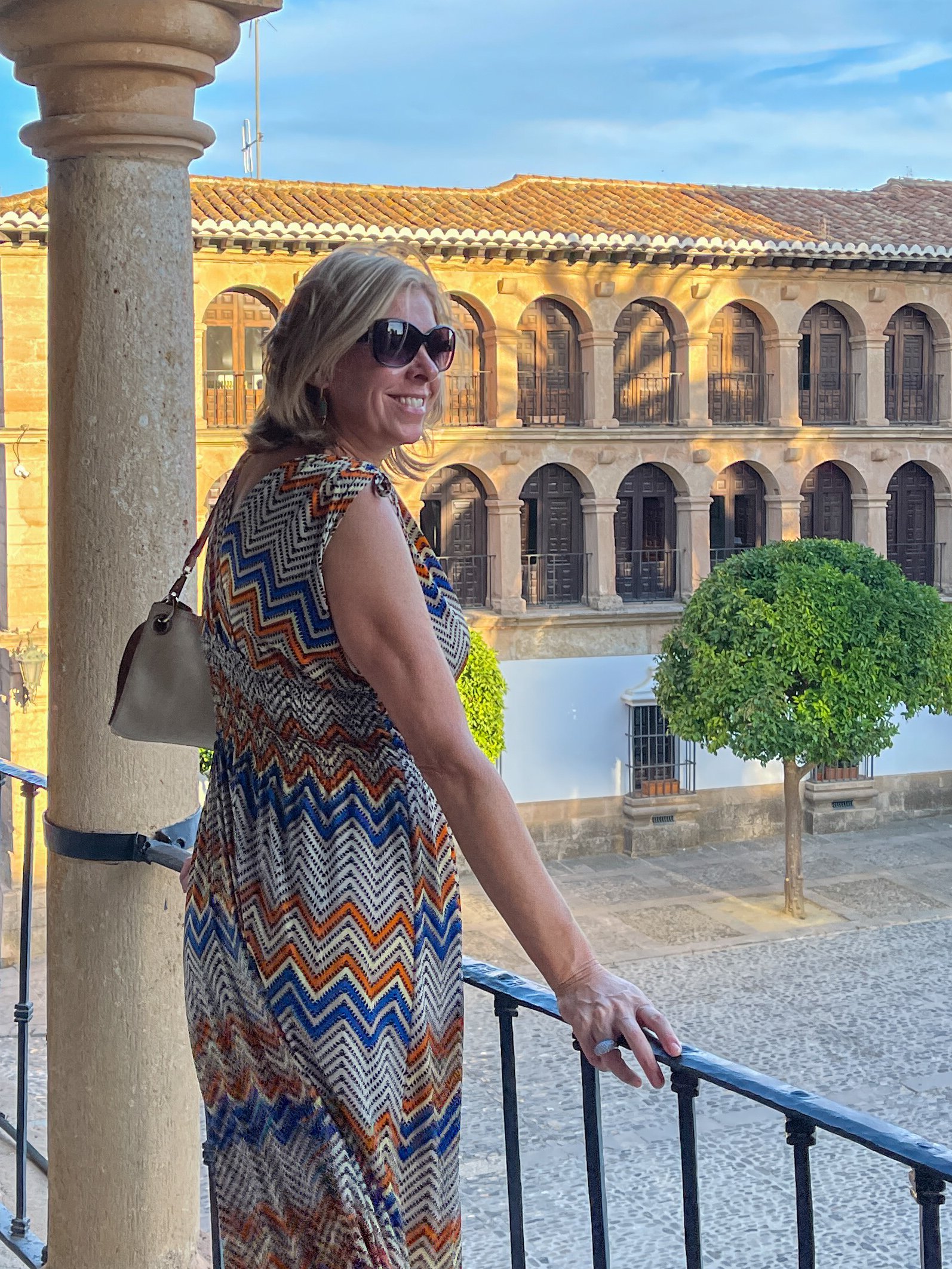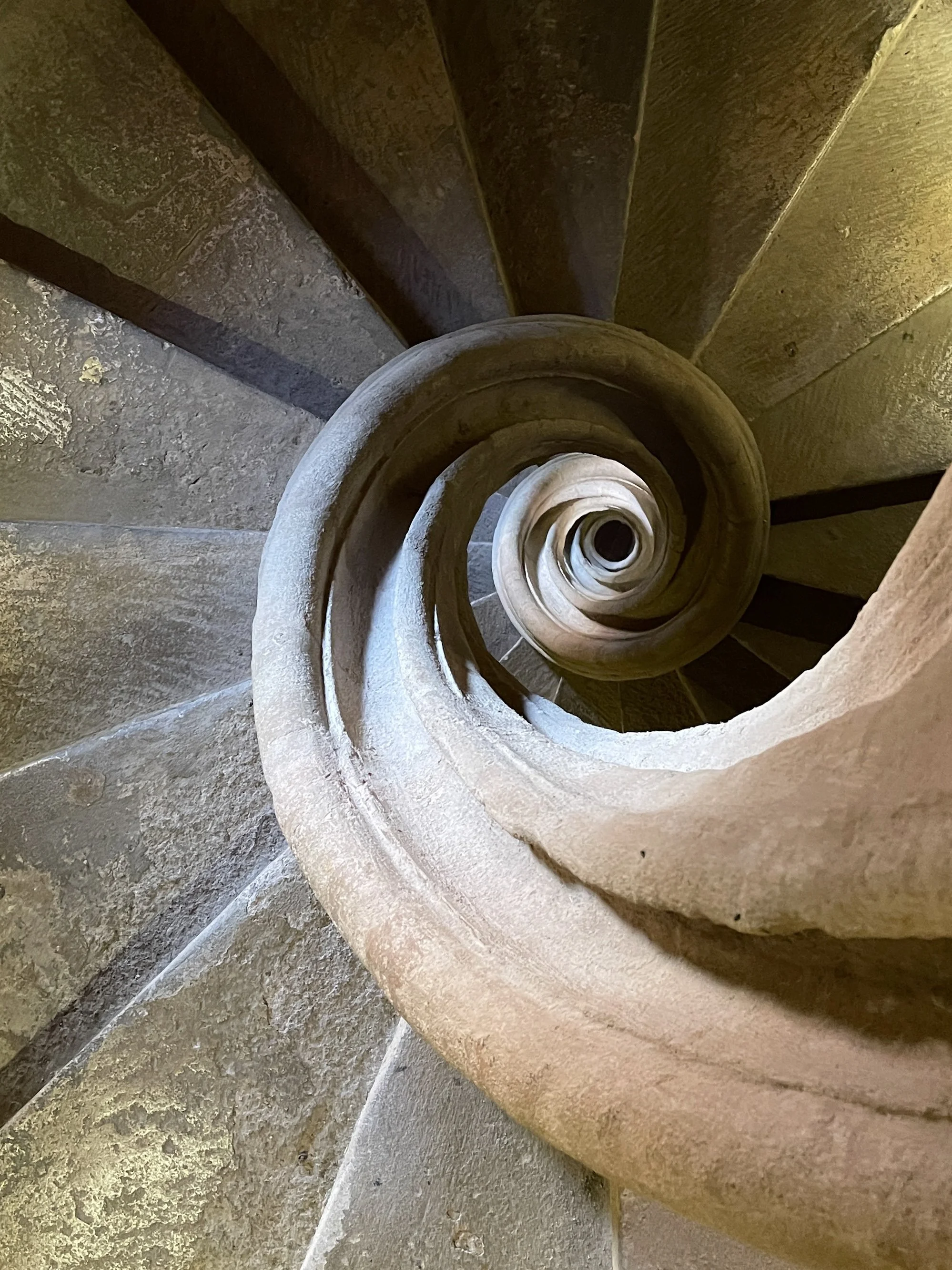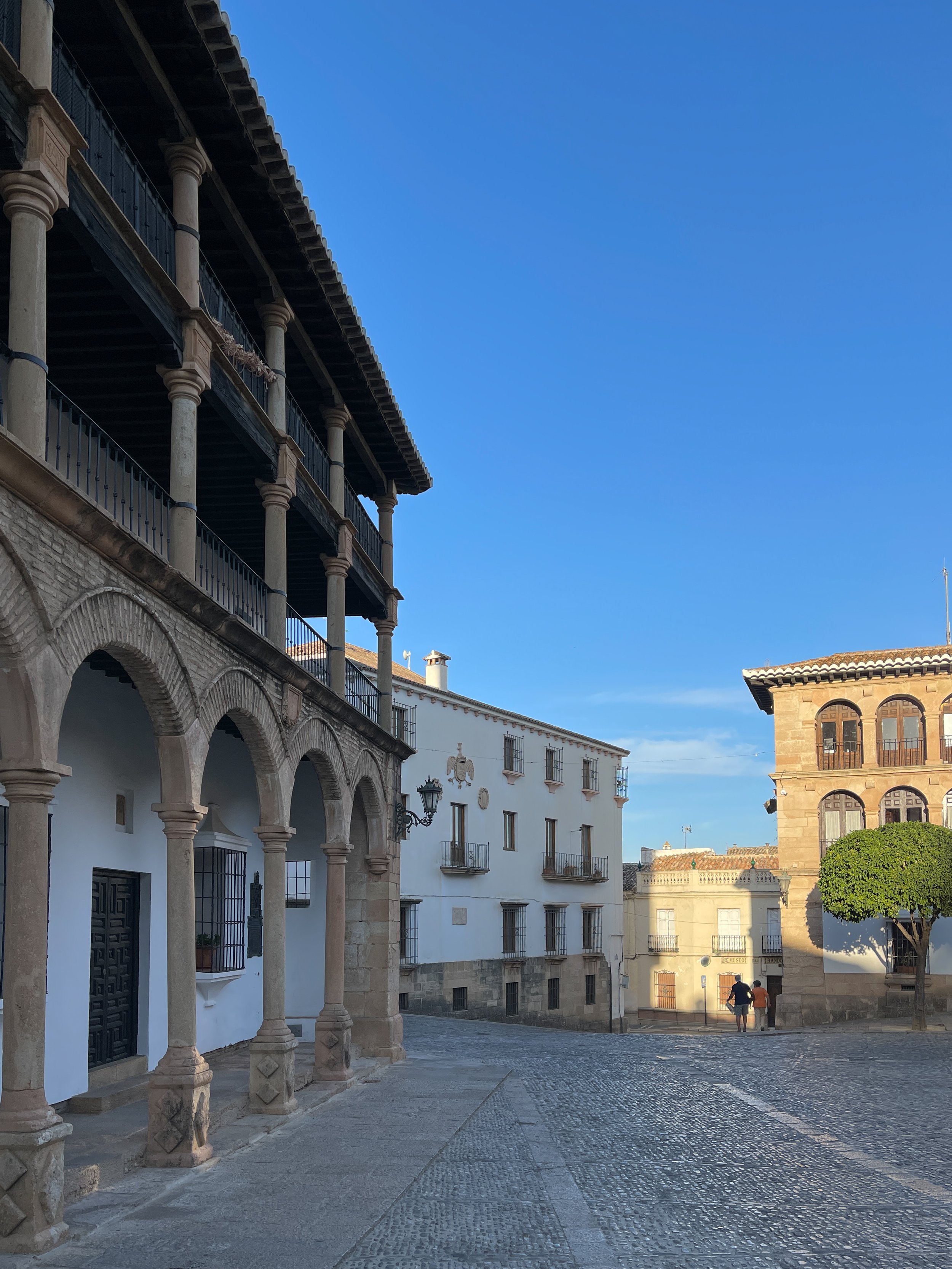From ancient groves to modern architecture: Take a tour of LA Organic, dedicated to the production of award-winning organic olive oils and co-founded by Philippe Starck.
José, Wally, Duke and Jo enjoyed learning about olive oil production at LA Organic — and tasting the goods afterward.
When I reflect on our time in the South of Spain, particularly our culinary adventures spent with our friends Jo and José, aceite de oliva, aka olive oil, immediately springs to mind — it’s essentially the foundation of Andalusian cooking.
“It takes about five years for an olive tree to mature. They typically yield between 33 to 44 pounds of olives, resulting in 2 to 5 liters of oil each year.”
Each morning starts with a humble piece of toasted bread, drizzled with olive oil and topped with grated tomato, to accompany a morning cup of coffee. Jo and José always had fresh molletes, a traditional ciabatta-like bread that they picked up from a local shop near their flat in Málaga.
Not to mention boquerones, a shareable and delicious appetizer of tender anchovy filets marinated in vinegar and olive oil that we consumed with gusto — something my younger self would have ignorantly declined.
A view of Philippe Starck’s avant-garde La Almazara, a mill museum that was partially built when we visited
A Starck Contrast
During our visit to Ronda, after visiting the church of Santa María la Mayor, Jo and José arranged for the four of us to take a guided tour of LA Organic (pronounced like the Californian city). The artisanal producer in the Andalusian countryside is located about two miles (three kilometers) outside of the charming town of Ronda, and was originally established in the 1990s as La Amarilla. It has since developed into an impressive full-scale business.
This collaboration involves Spanish investment banker Pedro Gómez de Baeza, whose family owns LA Amarilla, French designer Philippe Starck, and renowned oenophile Michel Rolland. Gómez de Baeza and Starck met in Madrid during the opening of Beatriz, a former theater converted into a restaurant. The interior was reimagined by the designer, and the pair became fast friends.
The sunny yellow entrance to the Greenhouse at LA Organic features an oversized single green olive and leaf, the same design used on their packaging, which was created by Starck in 2009.
LA Organic: What’s in a Name?
The “LA” in its name refers to La Amarilla, one of the centuries-old fincas (farms) within the sprawling complex, where more than 200 years ago, a small sisterhood of nuns lived, harvested and produced olive oil from the fruit of its ancient grove, some 800 years old — a tradition that the Gómez de Baeza family continues to this day.
Part of the interior the Greenhouse will have you seeing red — an homage to the local passion for bullfighting.
LA Organic Tour
After pulling into the red dirt parking lot and stepping out of the car, we exchanged curious glances, and a smile spread across my face. In the distance, among the neat rows of gnarled, knotted olive tree trunks, stood a crane and a large cuboid building, with an expressive eye peeking out from its terracotta-colored façade — the avant-garde future mill and museum of LA Organic, designed by Starck. It’s officially called La Almazara (The Mill), but nicknamed “El Toro” due to the huge horn planned to be added to its exterior.
The four of us took the red dirt path leading from the parking lot to a bright yellow building emblazoned with a massive green olive, the same one that appears on its packaging. I would later learn that this building is known as the Greenhouse, but to my eyes it looked more like a barn.
The back of the long, narrow Greenhouse has an outdoor patio.
Inside, we were provided with wireless headsets to help us hear our guide during the walking tour. We also watched a short video that recounted the origins of “liquid gold” in the Mediterranean and outlined the educational vision of LA Organic.
Once the video ended, our group followed our guide Úrsula outside. She began by telling us that the estates of LA Organic encompass 64 acres (26 hectares) and, in addition to the aforementioned ancient olive grove of La Amarilla, has over 6,000 different varieties of olive trees.
There are art installations by Starck in the groves.
Duke and Wally loved the giant mirror on the grounds.
As we followed Úrsula through the groves, she explained that it takes approximately five years for an olive tree to mature. During this time, each tree typically yields between 33 to 44 pounds (15 to 20 kilograms) of olives, resulting in 67 to 269 fluid ounces (2 to 5 liters) of oil per year.
A rustic guardaviña, a stone building used for storing tools and providing shelter during the heat of the day, as well as protection from rain, stands among the olive groves.
Olive Oil Production at LA Organic
We learned about the painstaking process of producing their exceptional organic olive oil. Úrsula explained that on harvest day, which would be happening in November, workers use 22-foot-long (7-meter) wooden sticks, known as a vareo, to beat the branches. Nets are spread beneath the trees to catch and prevent the falling fruit from landing on the ground, which would taint the harvest.
This majestic, olive tree is the oldest on the property — ringing in at 800 or so years!
The olives are then collected from the nets, transported to the Almazaras de la Subbética, a mill just under an hour away, and pressed shortly thereafter to preserve the integrity of the flavor. This results in an olive oil with the lowest possible acidity, without any chemical additives or fertilizers.
One of the varieties at LA Organic, the hojiblanca olive tree is typical of central Andalusia and is characterized by the white tone on the underside of its leaves.
Like a Virgin
Seven organic varieties grown here are used for production, including the soft and fruity arbequina, grassy hojiblanca, briny manzanilla, peppery pajarera, slightly bitter picual (named for its pointy shape), herbaceous picudo and verdial. Rolland applies his wine skills to masterfully blend these varieties, depending on the desired intensity of the oil.
Like coffee and wine, weather, terrain and soil conditions play a crucial role in determining both the quantity and quality of olives at LA Organic, with the most fruitful groves cultivated in the fertile hills.
Úrsula explains how drought has been a big problem of late, with decreased yields driving up the price of olive oil across Spain. (P.S. Using an umbrella is a good idea, with much of the tour exposed in the blazing heat.)
Dealing With Drought
Olive oil production in Spain dropped by about one-third in 2023 due to a prolonged drought caused by a string of heatwaves and nearly three years of reduced rainfall.
As the world’s leading producer of olives and olive oil, Spain supplies approximately 40% of the global output, with around 75% coming from the Andalusian region. Jo and José told us that, with the price of this cooking staple increasing, locals had resorted to stealing oil from restaurants.
Úrsula explains how olives are processed at LA Organic using the cold press extraction method.
More Than a Splash in the Pan
The tour culminated where it began, at the Greenhouse, with a tasting of their oils. LA Organic specializes in extra virgin olive oil (EVOO), which means that all their oils undergo a single pressing, using the cold-press extraction method.
This process involves crushing the olives into a pulp while keeping the temperature no higher than 80.6 degrees Fahrenheit or 27 degrees Celsius (the “cold” part of the process), followed by centrifugation to separate the oil from the pulp. Lower-quality oils — those that aren’t extra virgin — are often crushed multiple times and at higher temperatures to extract more oil from the fruit.
How to Taste Olive Oil
The tasting session featured four different kinds of olive oil, which we sampled both with and without bread. Our instructions were to pour a small amount of oil into our tasting cups and swirl it gently to release its aroma. We lifted the cups to our nose and took a deep inhalation, noting the differences in smell between the mild arbequina and picudo, intense yet smooth picual, hojiblanca and arbequina blend, as well as the grassy 100% hojiblanca oil.
Our tasting spread
When tasting olive oil, take a small sip and allow it to coat your mouth. Pay attention to the flavors and aromas present. It’s common to experience a peppery sensation in the throat, as well as notes of grassiness and bitterness, which are indicative of high-quality oil.
Inside the Greenhouse, where you can taste the oils, order drinks and nibblies, and buy some bottles to take home.
We bought a couple of bottles of the milder LA Organic Suave and a bottle of organic balsamic with sherry vinegar to take back to Chicago with us. (We’re ashamed to say that the bottle of olive oil we purchased as a gift ended up being used in our kitchen.)
A corten steel structure featuring a square cutout frames a stunning view of the Grazalema Sierra mountains.
The Deets
I highly recommend a tour of LA Organic as a way to learn about the cultivation and production of Andalusia’s most important export.
The walking tour and tasting cost $21 (20€) per person and lasted approximately 45 minutes, with an additional 45 minutes spent sampling their oils.
Our guide, Úrsula, spoke both English and Spanish fluently. She was friendly, enthusiastic and patient, taking the time to share her knowledge and answer all of our questions. We left feeling inspired by their commitment to sustainability and were impressed by the quality of LA Organic’s olive oils. –Duke
LA Organic
Carretera Ardales Ronda A 367
Kilometro 39,5
29400 Ronda, Málaga
Spain



















